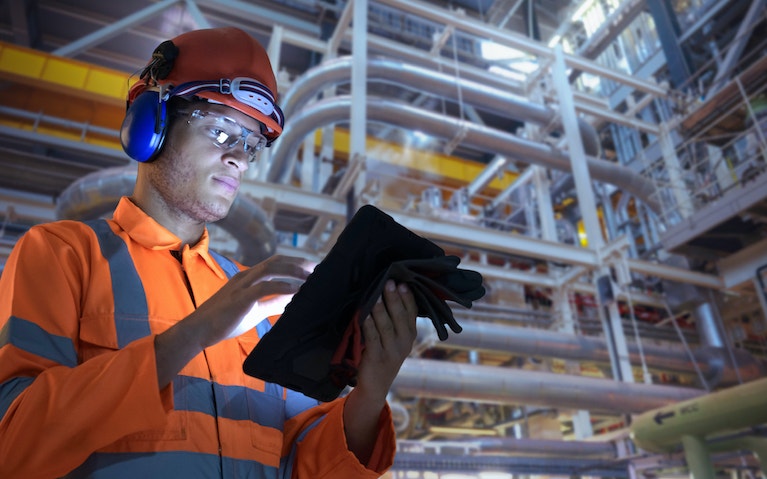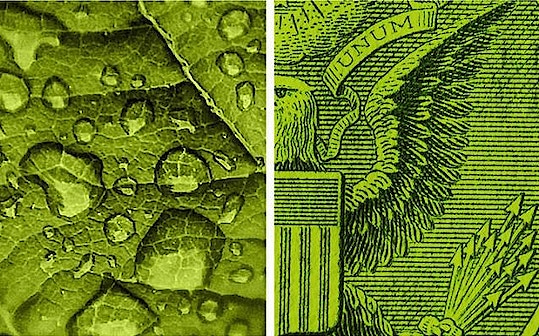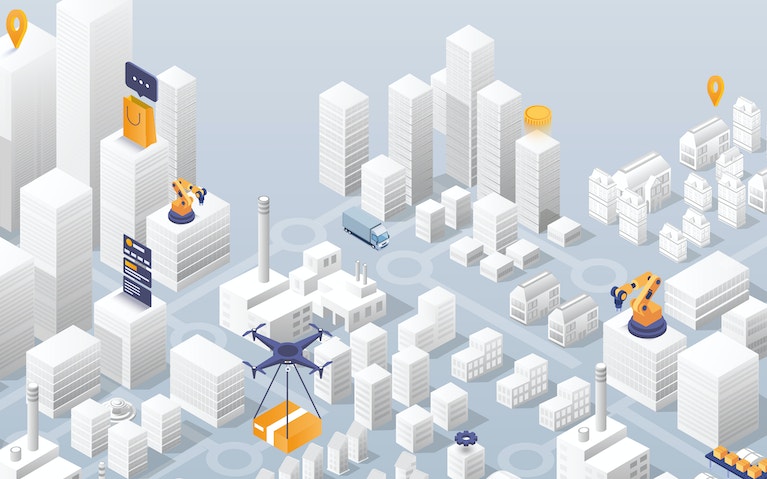
2030 Climate Action
High-impact technologies and innovations
While COP26 resulted in an agreement to wind down the use of coal, global emissions have continued to rise. The harsh reality is that we need to get to a 50 per cent reduction of emissions in the next 10 years to meet the Paris Agreement’s 1.5Cº climate goals. This demands a huge shift in thinking and investment, and unprecedented collaboration to scale and implement systematic transition to a climate-smart global economy.
Innovative technologies are central to this. With most technologies, the prospects, impact and pace of progress are bound up with investment, as well as public sector involvement through government incentives. Right now first movers play a critical role, not just to create demand, but also to help scale the technologies with the biggest impact while growing their own businesses.
The following high-impact technologies and innovations are assigned 1 lowest, 10 highest.
Green Hydrogen
Maturity 9 | Impact 10

The lowdown
Green hydrogen has the power to transform the entire energy industry. With applications in transport, heating, industrial processes and power generation it’s an enabler of long-duration energy storage. This would allow it to offset the intermittency and seasonality of other renewables such as solar and wind power. Hydrogen is also key to decarbonising hard-to-abate sectors like steel production and grey hydrogen used in refining and fertilisers. It has the potential to tackle the ‘final 20 per cent’ of emissions, which includes the industrial sectors and transport modes that aren't viable for electrification.
The upside
The key to producing green hydrogen is electrolysis generated from renewable energy. This power source represents a key part of many economies’ path to net zero because its uses are so varied, from zero-carbon shipping and aircraft fuel, to replacing natural gas. This makes it preferable to blue hydrogen produced from fossil fuels, which relies on hydrocarbon feedstock and carbon capture to make it net zero. Hydrogen’s energy density also has advantages over some other green technologies. For instance, hydrogen vehicles aren’t hampered by the limited range and long refuelling times of electric vehicles.
The downside
Electrolysis is an expensive process, there is currently no large scale storage for the system, and it can’t yet happen on a big enough scale to make a significant impact. Current electrolysers aren’t reliable enough for large-scale production, and the production of hydrogen requires extensive amounts of renewables. Hydrogen is also a less efficient source of heat than others like electric heat pumps, and consumer costs still look prohibitive.
Action to take now
Businesses have an opportunity to innovate across the value chain, but partnerships and consortia need to be formed. The key role for government is to put in place the policy and regulatory framework to enable the industry to scale up green hydrogen production rapidly.
Energy heat pumps
Maturity 8 | impact 10

The lowdown
Heat pumps effectively act like a refrigerator; removing thermal energy from one environment and transferring to another. Heat pumps use the thermal energy in the air or ground, and heat water for central heating and hot water systems in buildings. Heat pumps are also used for cooling systems. They can help homeowners and businesses lower greenhouse gas emissions and save energy on heating and cooling costs.
The upside
Heat pumps are a hugely efficient source of heat – many times more so than fossil fuel-based processes. Domestic heating accounts for around 20 per cent of greenhouse gas emissions in the US, while in the UK domestic heating accounts for around 14 per cent of emissions. The technology is readily scalable and ideal for new builds. So as long as the energy powering them is renewable, heat pumps can theoretically make a huge dent in sustainable heating. They are already commonly used in the US, showing proof of concept for other regions.
The downside
Heat pumps are expensive: a small one currently costs around £10,000 to install. Also, as a source of steady ‘background’ heat, they’re not suited to older, draughty houses or to climates where people need a sudden boost of heat.
Action to take now
Government incentives are cutting the upfront cost of pumps by as much as half. Individual and ‘district’ heat pumps are becoming more common in new homes. And developers are exploring a hybrid with more conventional heating that could serve larger, less well insulated houses.
Direct air capture
Maturity 4 | Impact 10

The lowdown
This emerging technology takes in atmospheric air through large fans and removes carbon dioxide from using natural or chemical agents, either storing it underground, for example in depleted gas fields, or allowing it to be reused as synthetic fuels, in food packaging, fizzy drinks and so on. This technology helps course correct and accelerate our ambition of reaching 1.5°C.
The upside
Direct air capture could dramatically shorten the time to net-zero carbon. If deployed in the next 10 to 15 years and run for 100 years, it would have a substantial impact on net-zero and possibly even reverse temperature rises. A potential smaller-scale application is the food and drinks sector, which currently uses fossil fuel-derived CO2 in food packaging and fizzy drinks.
The downside
In its current form, the technology is energy-hungry, costly, massive in size and loud. To have a significant impact on global CO2 levels requires scale and a significant alternative energy supply.
Action to take now
Direct air capture has attracted government sponsorship, with backing for more than 20 organisations developing different technologies at different stages of maturity. The future of direct air capture depends on incentives, development of global voluntary carbon markets and creating a global certifying body. There needs to be a mindset shift from businesses when deciding on where to confidently buy carbon offsets and the difference in value when buying from a nature-based solution versus technology-based solution.
Deep learning Artificial Intelligence (AI)
Maturity 5 | impact 9

The lowdown
AI is widely used to understand processes like production and maintenance, as well as supply chains and consumer habits. Deep learning AI offers predictive insights, through multiple rapid simulations, into the effects of different variables and scenarios, and so acts as a strong basis for decision-making. It even has the potential of completely automating decision-making.
The upside
Deep learning AI could have a transformational impact on businesses and the planet by unlocking insights into what it will take to cut climate impact. The technology shows the modelled impacts of various scenarios, learning how to improve the evaluation of the trade-offs and ultimately delivering a more valuable outcome with each successive simulation from the decision-maker. Over time, as organisations and decision makers get comfortable with the output, climate impacts derived from AI modelling can become a normal part of decisions, on a par with costs, risks and time.
The downside
To have a climate impact, businesses using the technology have to incorporate climate variables into existing business decisions. Even if it’s not part of their business case, by solving other problems like cutting energy use or material costs, they can reduce climate impact in the process. The value and impact of the technology depends on a mindset change, both to understand its possibilities and to act on the results.
Action to take now
Established technology players like Microsoft are involved, making it more likely that we’ll see climate-focussed AI becoming a viable service in the near-term.
Green steel
Maturity 3 | Impact 10

The lowdown
Steel is central to heavy industry, manufacturing and construction. But while it’s durable and recyclable, it’s carbon-intensive to produce, accounting for 6.7 per cent of global CO2 emissions, not least because of the coal-fired energy behind blast furnaces. Green steel is produced by replacing coking coal with green hydrogen from renewable electricity.
The upside
Steel is globally ubiquitous and there is recycled steel available. Any steel of proven quality made without coke is sure to attract interest from businesses, for example in the car industry, keen to boost their green credentials.
The downside
Green steel will take time to implement as it requires enormous investment from an industry that is plagued by chronic oversupply and profitability swings, which means the cost will be significantly higher than traditional steel and needs to come down to become economically viable.
Action to take now
form global cross sector partnerships to transform the coking process, like HYBRIT; has done by forming a collaboration between SSAB, LKAB and Vattenfall Coking. Governments also need to put incentives in place, such as subsidy schemes or carbon pricing to drive the economics.
Carbon capture for industry
Maturity 8 | Impact 5 (if renewables are deployed) | Impact 10 (if renewables are delayed)

The lowdown
The most mature CO2 capture processes rely on the use of amine solvents to wash CO2 out of a gas mixture, such as flue gas. Amine solvents have been around for decades, but are yet to be applied to cement, steel or power generation – the highest CO2 emitters. It is a relatively well understood process, however the increased demand and scale needed brings new challenges beyond traditional chemical players, and to address these we are seeing new start-ups emerging.
Competitive methods such as membranes or liquefaction are also starting to come to the market.
The upside
Carbon capture is a transition technology that will help us stop putting additional carbon in the atmosphere while we are deploying renewables and altering technology to help carbon heavy industries, such as cement and steel to become carbon neutral. There are new use cases developed such as curing cement which will trap the CO2 in cement forever, production of biochar and synthetic fuels. New, smaller and modular technologies are beginning to emerge to enable scale.
The downside
The land space required for amine based carbon capture is immense and a lot of the facilities that need it do not have enough real estate. Carbon capture costs money and is not a revenue generator for businesses. For example, power generation is heavily regulated and the cost of building a facility and then also finding a way to store the captured carbon is expensive and a hard business case to build.
Action to take now
Governments need to create the right regulatory environment, and the right incentives – such as carbon taxes - to drive action. Current models rely on carbon storage - but if we start to see industries that require high levels of carbon dioxide as feedstock, new use cases need to be developed to use the CO2 together with new business models.
Digital watermarking for recycling
Maturity 4 | Impact 8

The lowdown
Digital watermarks help sorting systems work more accurately by giving them more information, through high-resolution cameras, about the origin and type of materials, and previous use. The technology makes for better sorting into categories including food and non-food, polymer types and compostable and non-compostable. Through smartphones, the watermark can also tell consumers how to recycle materials.
The upside
Demand for recycled plastic currently outstrips supply. This technology increases that supply by directing more plastic to the right recycling process for higher-quality recycled stock. More businesses meet their targets for using recycled materials, and less plastic goes to waste.
The downside
Success relies on collaboration between and across industries in the complex plastics value chain to standardise infrastructure and technology. The technology is geared to relatively mature recycling value chains in the global north. A truly transformative impact could depend on better infrastructure in other parts of the world.
Action to take now
The technology started in 2016 as the Holy Grail project by a group of companies led by P&G and supported by the Ellen Macarthur Foundation. Holy Grail 2.0 has started ‘semi-industrial’ trials in Copenhagen, run by the AIM and the Alliance to End Plastic Waste, with in-market demonstrations expected in 2022. Other big players like Nestle, Pepsi and Danone are also involved, which will speed up development. Continued collaborative investment across the ecosystem is necessary to unlock the true power of this technology. Materials with the watermark still need to be collected through a waste infrastructure, processed with the right scanners, and re-processed in the most effective way. Any brand thinking of adding a digital watermark will have to determine if its package is valuable enough to the waste economy to be recycled.
AI, imagery, and machine learning
Maturity 7 | impact 6

The lowdown
Imaging gives
insight into land use and crop health to help agriculture businesses and
food producers get the most from their land and cut down on irrigation
and fertilisers. When coupled with direct emission data sets and
learning through the use of AI, these images can give farmers key
insights to support their crop growth and, ultimately, create positive
climate outcomes by reducing crop waste, fertiliser and pesticide use.
The upside
Commercial deployment of satellite systems have increased drastically over the past ten years, improving access to imaging satellite systems. This increases access to near real-time images without the need to deploy local image-gathering hardware and gives farmers access to crop imagery from their computers. Applying AI modelling based on crop types and data through cloud systems can help farmers understand the health of their crops, as well as predict yield and spot opportunities to act in time to save harvests.
The downside
Satellite technology is developing fast, which deters heavy investment by agri-businesses fearful of making the wrong bets. Satellite-to-rent services are one way around this. The initial set-up and learning period to make sure the AI is providing the right insights and outputs for the types of crops, the climate and the region can be long because of the relatively small numbers of farmers providing data globally. Also, the cost of technology adoption, both from digital exploitation and precision agriculture equipment, can be prohibitive to farmers.
Action to take now
A regulatory ‘push,’ like the EU’s demand to halve fertilisers by 2025, incentivises large-scale producers to focus more on regenerative agriculture. And that will drive them to use any technology that helps them increase yield from their land and reduce their use of agrochemicals in more cost-effective ways.
We are at the forefront of cutting edge technology
Our latest thinking









